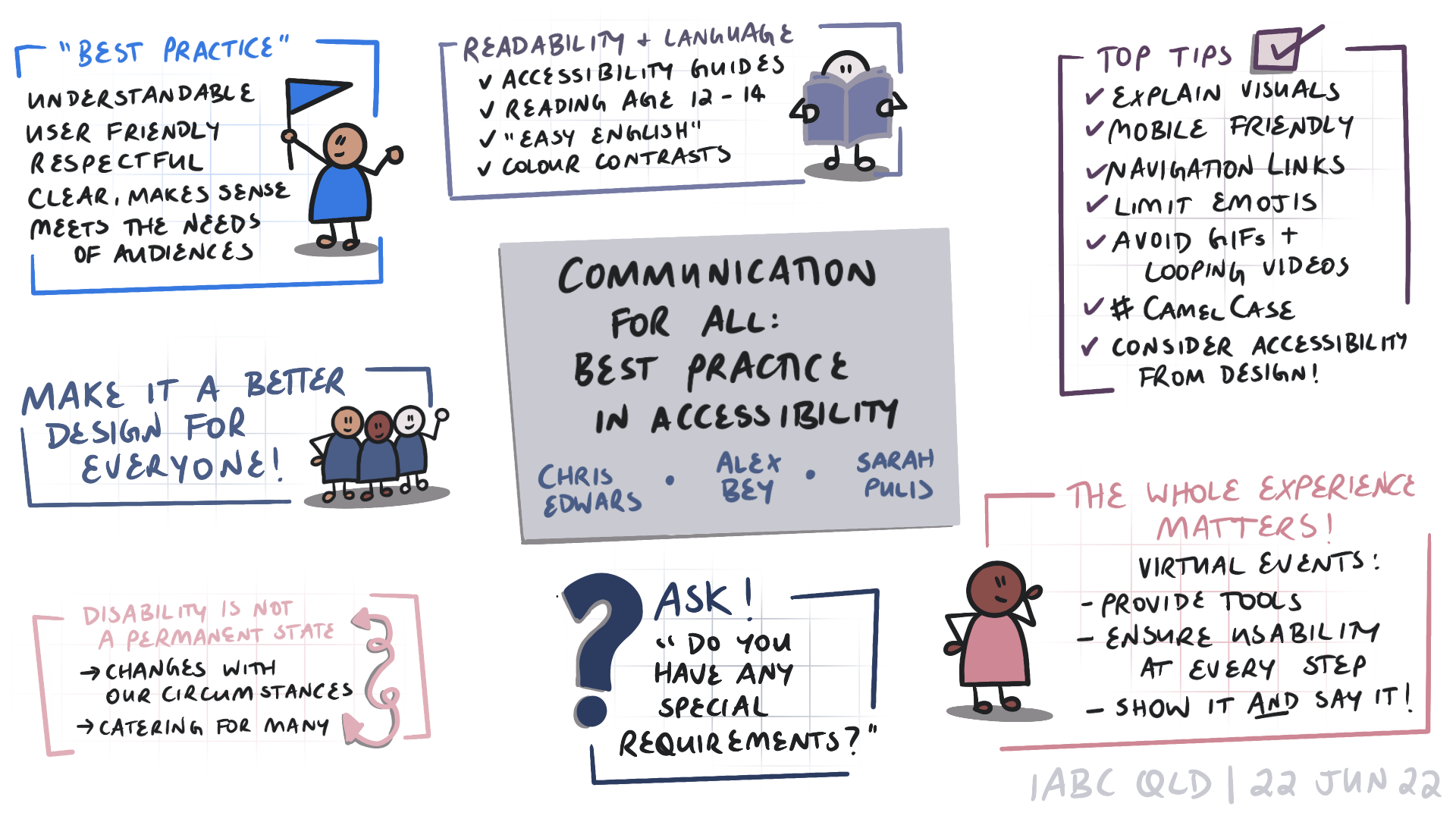How to make sure your comms are accessible to all
Up to 20% of Australians identify with a disability. This percentage is often higher when temporary impairment such as injury and situational impairment, such as using your phone in the sun are considered, along with undisclosed, hidden disabilities or impairments as a natural result of ageing.
At a recent IABC Qld event we were joined by a panel of experts in accessibility - Chris Edwards from Vision Australia, Sarah Pulis from Intopia, and Alex Bey from TaggedPDF. Through sharing their own lived experiences and the experiences of their clients, we learned the many ways comms can be undertaken to ensure it meets to needs of everyone in your audience.
Some of the key points I took away from the discussion are summarised in my sketchnote below, but what really struck me was that many of the tips provided should be applied to our comms anyway! For example, explaining a visual (not just saying ‘as you see on the screen’); providing navigation links in long-form content; and ensuring you’re providing a mix of channels to engage with. But most importantly, ask your audience what they need! From the design phase at the very beginning, ensure you’re asking questions and making sure that accessibility is factored in along the whole customer journey, not added in as an afterthought.
Our pannelists and some of our guests also shared some great resources, which I’ve listed below.
If you are keen to know more about IABC Qld and the events and resources on offer, head to the LinkedIn page here.
Sketchnote of key takeaways from the IABC Qld event on accessibility in communication.

